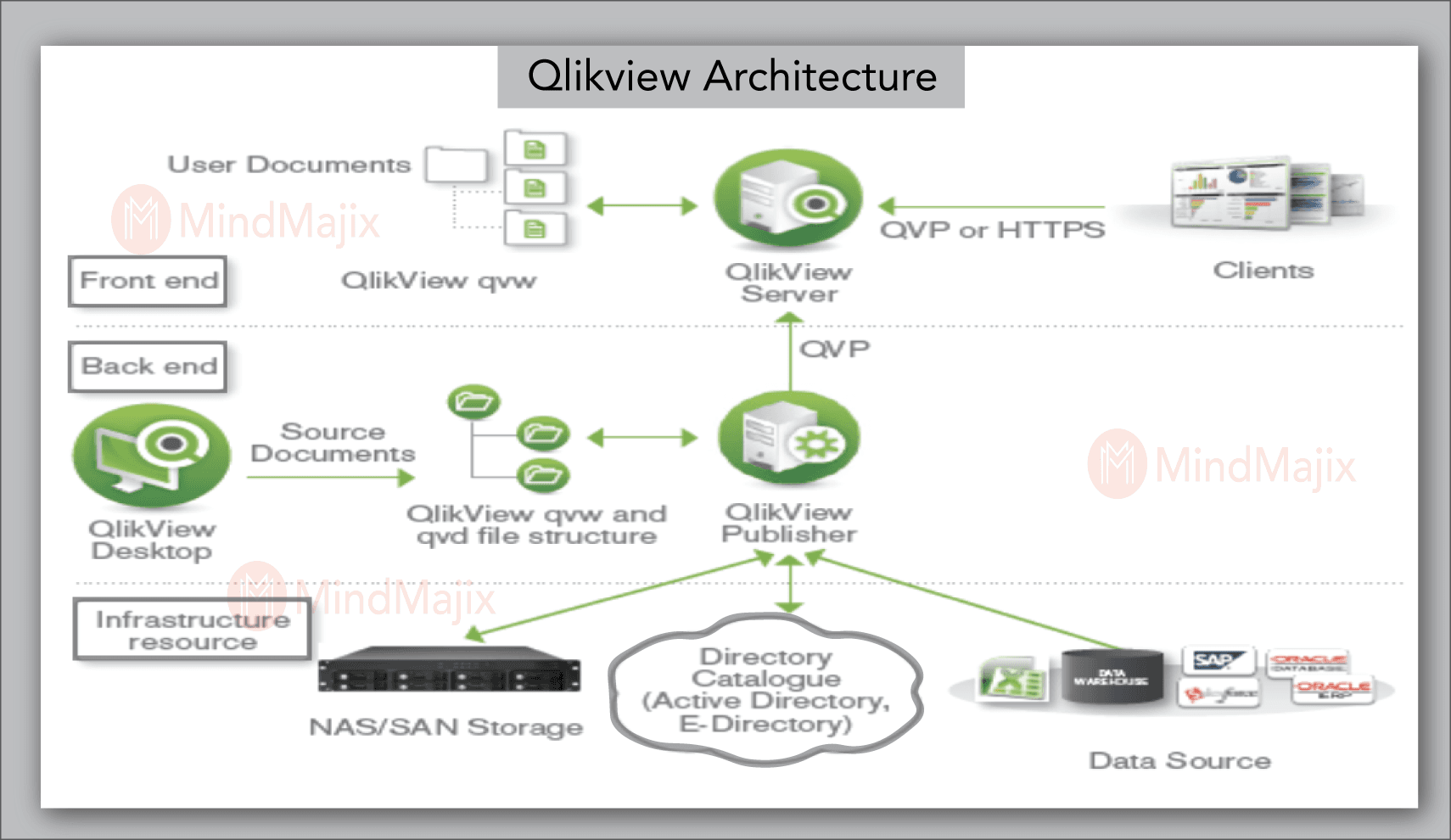- About QlikView Scripting & Qlikview Hidden Scripts
- QlikView Circular Reference
- OLE DB/ ODBC Connection to Qlikview Data Sources
- Best Practices for Data modelling in QlikView
- Definition And Advantages of QVDs in QlikView
- How to Fix Circular References & Remove Synthetic Tables
- Concatenating Two Tables in QlikView
- Creating Data Islands in QlikView using Data Source
- Optimize QlikView Application User Interface
- Learn SET Analysis Syntaxes, Examples in QlikView
- QlikView Table Viewer - Previews Records
- Process of Incremental Load in QVD QlikView
- Binary Load in QlikView
- QlikView Bubble Chart
- QlikView Data Transformations in Flat Files
- Intervalmatch Function in Qlikview
- QlikView Interview Questions
- Qlikview Management API
- Qlikview Mapping
- QlikView Metadata
- QlikView Qualify
- QlikView Tutorial
- QlikView vs Qlik Sense
- Color Alerts and Calculated Colors In QlikView Scripting - QlikView
- How Debugging works in QlikView Script Debugger
- Rename Field and Qualify in Qlikview
- Script Editor Features and Commands in QlikView
- Script Expressions & Quotation marks in Qlikview
- Qlikview Scripting Features and Functions
- Star schema and Snowflake schema in QlikView
- Synthetic keys in QlikView
- Table Viewer in QlikView
QlikView is a popular business discovery platform that allows all the organizational users to do self-service BI. By using QlikView, you can analyze and visualize the data, their relationships, and use those analyses to make decisions. It can retrieve data from various sources along with files and relational databases. If any data source is too large for QlikView memory, then it can directly connect with that data source. QlikView compresses the data and keeps in memory so that multiple users can use it instantly for analysis purpose.
Though datasets are large, QlikView can analyze and grasp the overall picture, find connections between data, and provide insights of data. QlikView works the same way as the human brain works. Just like a human brain, QlikView also provides associative connections between data getting processed.
Get ahead in your career by learning Qlikview through Mindmajix Qlikview Online Training.
Below are some features of QlikView which enables advanced reports from multiple data sources rapidly.
- As QlikView saves the data in memory, aggregation can be done very rapidly as we don’t need to store pre-computed aggregate values.
- QlikView compresses data to its 10% of the original size.
- QlikView automatically finds the relationship between data as soon as data is fed to it. No need to configure the relationship between datasets.
- Using QlikView, direct and indirect search, both will work consistently due to its data association feature.
- Relationships between data items are displayed as colors instead of arrows or lines.
QlikView has many different applications. Which way you need to use is up to you. Below are few applications where you can use QlikView.
- Dynamic graphical tables and charts
- Construct own expert systems
- By merging data from various sources, create new tables
- Statistical analysis and performance
- Retrieve snapshots of data relationships
- Presentations based o
QlikView Architecture Overview

QlikView is a Windows-based application. QlikView architecture is separated between different roles. Its front end enables us to visualize the processed data whereas its back end provides security for QlikView documents. It is composed of 3 main components:
- QlikView Server
- QlikView Publisher
- QlikView Desktop
Moreover, it also contains few more components like QlikView Management Console and QlikView User Access. All these components contribute and help QlikView to design and develop applications.
Before digging into its architecture, let us first explore all its components to know how and why they are used
[Related Article: Qlikview Tutorial for Beginners]
QlikView Desktop
- QlikView Desktop is a windows-based and wizard-driven tool through which users can develop QlikView applications GUI and data model. It also facilitates users to manipulate datasets using SQL-like scripting language. Data can be transformed, read, shared between different QlikView applications using QlikView Desktop.
- Users can choose their own data representation modes in QlikView Desktop. Files having UI details are saved with the .qvw extension. However, if files are not having any UI details then an extension of files is changed to .qvd.
QlikView Server
- So, to host all the developed QlikView applications, you need a server, which is QlikView Server. Once applications are hosted, then only they are available to end-users. QlikView Server communicates between server and client like a desktop, web browser, or mobile. QlikView Server is responsible for providing datasets from the backend to end-users.
- QlikView Server has many features like data management, security, data distribution, scaling, etc.
QlikView Publisher
QlikView Publisher is utilized as a distribution service, which can retrieve data from various data sources like data files, Informatica, Salesforce, etc., and load them into QlikView files (.qvd or .qvw). It distributes .qvw files between different QlikView users and servers. Moreover, it also manages access privileges and authorization.
QlikView Management Console
QlikView Management Console is a web-based interface, managed by an IT professional. It is a central management console that handles all QlikView components.
QlikView User Access
QlikView User Access lies on the front end from where users can access QlikView and manipulate data files. Users can access this front end from any medium like web, mobile, desktop, laptop, etc.
QlikView Directory Service Connector
QlikView Directory Service Connector can retrieve various user details for end-users from various sources such as Active Directory, ODBS, LDAP, and Custom Users. Web services use Directory Service Connector for the resolution of any group and DSC will search for their email addresses.
How does QlikView Works?
Now, let us see how all these components relate to each other and how they communicate with each other. The below diagram depicts how all components are interconnected.
The whole architecture is divided into 2 sets based on their roles:
Front End:
The front end is the place where users communicate and manipulate data and documents which they have the authorization to access using QlikView Server. Moreover, the front end contains those documents which are created through QlikView Publisher in the back end. The front end is responsible for all the interactions happening between client and server. QlikView Server handles client authorization for the same.
Back End:
The back end is the place where QlikView stores documents that are created by QlikView Developer. The source files have scripts to retrieve data from different data sources such as Excel, Salesforce, Data warehouses, SAP, etc. The distribution service is responsible for loading and distribution in the back end. The back end uses infrastructure resources like directory catalogs or SMTP servers for clustering.
Leave an Inquiry to learn QlikView Certification Course in Bangalore
Three-Tier Architecture of QlikView
The three-Tier architecture of QlikView contains 3 layers for extracting data from various sources, storing them into QlikView data files, applying business logic, and developing data models using QlikView data files (QVD files), and creating the dashboards so that end users can analyze and process the data.
Below are 3 tiers in QlikView architecture.
- Load (Extract and QVD Layer)
- Transform (QlikMart Layer)
- Presentation
Let us explore each layer in detail to understand the importance of that layer in QlikView architecture.
Load Layer
- This tier connects with different data sources to retrieve data and store it in QlikView Data files (QVD files). It can connect to the database using ODBC or OLEDB connection or any 3rd party tool like Salesforce for data retrieval.
- QVD file contains data extracted from QlikView. Reading QVD files is 10-100 times faster than reading from any other data source. Hence, it increases data loading speed and decreases the load on database servers. Incremental load is also possible for QVD files and you can also consolidate data from different QlikView applications into a single QVD file.
Transform layer
- Transform layer, as the name implies, transforms QVD files into business logic. The data model is created based on this with either star or snowflake schema.
- A snowflake schema is a schema where large dimensional tables are normalized and converted into multiple tables. Star schema is the schema where a fact table is connected with various dimensions table which in turn creates a star pattern. A star schema has one fact table and is associated with numerous dimensions tables and depicts a star.
Presentation Layer
- This tier has a binary file from the second tier. This binary file is used to load data and access parts of a QlikView document. Layout information is not loaded in this. Using this, dashboards are being prepared.
- The dashboard is a data visualization tool displaying metrics, status, KPIs for an organization. It also has various widgets, filters for business end-users to analyze and process data easily to identify business achievements and failures.
[Related Article: Qlikview Tricky Interview Questions]
Significance of three-tier architecture of QlikView
Let us have a look at few advantages of the three-tier architecture of QlikView:
Performance Improvement:
Due to QVD files, loading can become 100 times faster than loading data from databases.
Flexibility:
It provides more flexibility as QlikView uses binary load for the presentation layer. This transform can be utilized by multiple dashboards.
Easy to maintain:
Maintaining QVD files is very easy as QlikView has separate QVD generator files for every data source. If there is any failure, it is very easy to find out the faulty one instead of taking down all the data sources to fix one.
Reusability:
Many applications can use QVD and transform files.
Conclusion
For any tool or technology, architecture plays a very important role. Here, understanding QlikView Architecture tells you a lot about how QlikView operates practically. As it is a self-serving software, it is very important to know its architecture before actually working on it.
Explore QlikView Sample Resumes! Download & Edit, Get Noticed by Employers! Mindmajix Qlikview Sample Resumes.
 On-Job Support Service
On-Job Support Service
Online Work Support for your on-job roles.

Our work-support plans provide precise options as per your project tasks. Whether you are a newbie or an experienced professional seeking assistance in completing project tasks, we are here with the following plans to meet your custom needs:
- Pay Per Hour
- Pay Per Week
- Monthly
| Name | Dates | |
|---|---|---|
| QlikView Training | Jan 03 to Jan 18 | View Details |
| QlikView Training | Jan 06 to Jan 21 | View Details |
| QlikView Training | Jan 10 to Jan 25 | View Details |
| QlikView Training | Jan 13 to Jan 28 | View Details |

Vinod Kasipuri is a seasoned expert in data analytics, holding a master's degree in the field. With a passion for sharing knowledge, he leverages his extensive expertise to craft enlightening articles. Vinod's insightful writings empower readers to delve into the world of data analytics, demystifying complex concepts and offering valuable insights. Through his articles, he invites users to embark on a journey of discovery, equipping them with the skills and knowledge to excel in the realm of data analysis. Reach Vinod at LinkedIn.
















